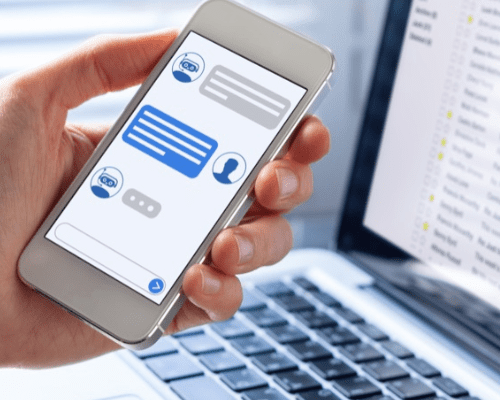According to both Forbes and Forrester, the rise of the chatbot has accelerated alongside the Covid-19 global health crisis.
Chatbots: Why they are relevant and what you need to know. According to both Forbes and Forrester, the rise of the chatbot has accelerated alongside the Covid-19 global health crisis. Increasing numbers of businesses rely on them for customer service interactions or even mitigating crisis situations. But choosing the right features for your business can be difficult when the pressure to instal a best-in-class solution for such a key channel can play a major role in the purchase decision.
An understanding of the jargon, knowledge of Forrester’s key feature groups as well as an informed analysis of the modern features of chatbots, and all available feedback can make an important difference in that choice.
Buzzwords matter
This is a sector in which buzzwords are prevalent, and it’s important to know what they mean if you’re to find the right technology partner in a crowded market. A confusing marketing focus on Artificial Intelligence (AI) and Machine Learning (ML) does little to demonstrate the key features that actually matter. The ‘conversational anatomy’ of a chatbot – the ‘chat’ driving conversation, and the ‘bot’ driving actions, is what a business is actually purchasing.
Generally, this anatomy comprises two parts. The comprehension module relies on conversational AI to process language, analyse tone and maintain context. The response generation modules then identify the intent of the exchange and present information. Within those processes, much of the common jargon comes into play. And knowing what the following terms mean is essential:
● Natural Language Processing/Understanding (NLP/NLU) refers to machines which derive meaning from a conversation, having a strong impact on customer experience.
● Natural Language Generation (NLG) produces human-like interactions.
● Sentiment analysis trains bots to recognise nuances such as humour or sarcasm to accurately extract sentiment from the exchange.
● Long Short-Term Memory (LSTM) allows a chatbot to switch between conversation flows without losing track of context.
● Dynamic dialogue enables accurate responses to multi-faceted questions.
● Intent classification identifies what the human chatbot user wants to achieve.
● Entity extraction picks out the subject and object in a sentence, matching them to predefined categories.
● Semantic and cognitive search is an evolution of keyword searching, producing better search algorithms.
● Lexicons are a chatbot’s vocabulary/dictionary.
But what’s relevant to your business
With Gartner suggesting that there are over 2,000 chatbot providers, not every product will provide the right solution for your business. Conversational bots, for example, provide the more meaningful human-like experience that the inferior scripted chatbots cannot – something which Forbes insists customers are looking for nowadays. This is one important consideration, but there are many significant factors that should be carefully taken into account before any purchase. For example, the design features built into each product. These can include:
● Use-case design, which enables the accomplishment of actions between bot and user, and helps map the product features to the bot.
● Human-in-the-loop design, which helps in the vital cases where a query must be escalated to a human for an adequate response.
● Feedback beyond numbers, a widely adopted metric for insightful feedback.
Best practice in chatbot design also suggests that use cases should be utilised to define all your business’s customer and system touchpoints. And beware of new features – not every new chatbot feature is going to be what your business needs, so Forrester recommends evaluating any new features carefully to ensure their relevance to you.
The importance of negative feedback
Receiving praise from a customer is always welcome, of course. But in the case of chatbots, negative feedback is considerably more useful because, as Forrester demonstrates, it offers insights into what went wrong with a particular exchange. Haptik, for example, uses a proprietary metric known as ISAT that analyses negative outcomes to guide conversational design. Only negative or neutral feedback affords a business a view of what needs to be changed, so this should also be factored into any purchase decision.
Conclusion
Best-in-class technology may not necessarily be the right solution for your business. Over-investment in features that you don’t need could be the unintended consequence, so research the state of the chatbot technology landscape carefully.
Understand the terminology used, and focus on the tangible benefits of a given product in order to effectively leverage the potential of AI and ML.
redk can partner with your organisation in these important strategic decisions. Using 15 years’ experience as technical consultants and CRM experts, redk supports companies looking to enhance efficiency and profitability through world-class tools that optimise performance across organisations.










